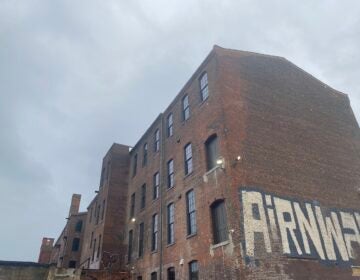John Westrum

JOHN WESTRUM
Age: 43
Education: B.A. in Ecomonics from Bucknell University. 1986 graduate.
Professional: CEO of Westrum Development Co. Westrum is building more than 400 townhomes and condos on former naval housing barracks at Packer Park area, 20th and Pattison. The company is also redeveloping part of Brewerytown at Rte.31 and Girard Avenue; constructing market-rate units on a former Philadelphia Housing Authority site at Schoolhouse Lane and Ridge Avenue in East Falls; and building age-restricted homes at the former Byberry State Hospital on Southampton Road and Roosevelt Boulevard.
Volunteer/Community work: Co-chairman of the Mural Arts Advisory Board; governor appointee and only developer serving on the State Planning Board.
Personal: Separated. Three children: Tyler, 14 and twins Katie and Meg, 11.
Philadelphia resident for 1.5 years. Grew up in Blue Bell.
Neighborhood: Rittenhouse Square
Appointer: Anna Verna.
Q&A
Why is zoning reform important to you? There is a need to correct an archaic zoning code that is mired with pitfalls that preclude progressive development needed to make Philadelphia the next great city.
Why are you a good choice for this commission? Number one, I care about helping Philadelphia be the next great city. Number two, we are the largest residential developer in Philadelphia and are focusing on revitalizing neighborhoods and abandoned brownfield areas. Three, we’ve made a huge commitment to the city with several thousand future building lots under control. And four, both as a company and personally, we want to see additional development spurred in the city to increase investment, population and tax revenue for the city.
What is the most pressing zoning issue Philadelphia faces? Consolidation of zoning classifications and elimination of the need to go to the zoning hearing board for every application. Currently there are 31 residential codes that could be consolidated into approximately 6 or 7 that (would) give developers more ability to work with community organizations and allow creativity to develop 21st Century products. All these zoning codes were established in 1962 or have been added over the years. (If one looks at) their text components and what is being built or proposed, it almost always requires zoning hearing board decisions.
What should be done to address this issue? Simplification of the zoning code, reduction of the number of zoning codes (classifications) and establishing 21st Century criteria – putting the codes up-to-date in terms of modern design and materials. My vision for what should occur is that each councilmatic district and all constituent groups should get together with a professional planner and plan out what they want to see in their councilmatic district. Then, the planning commission should pull (all the districts) together as a puzzle and see how it fits together, and then make modifications based on what that puzzle looks like. That will provide for developers and interested parties to know what can be built in particular areas (by) having pre-determined community input. Give us a road map, and we’ll follow it.
WHYY is your source for fact-based, in-depth journalism and information. As a nonprofit organization, we rely on financial support from readers like you. Please give today.






